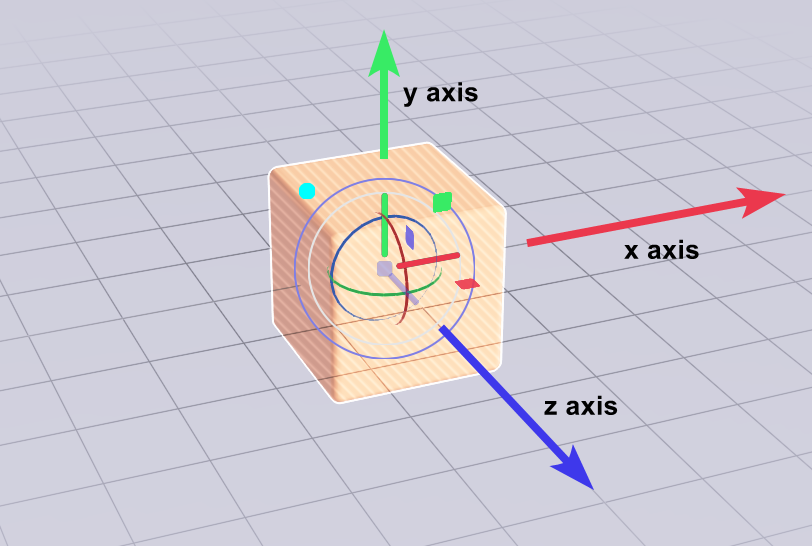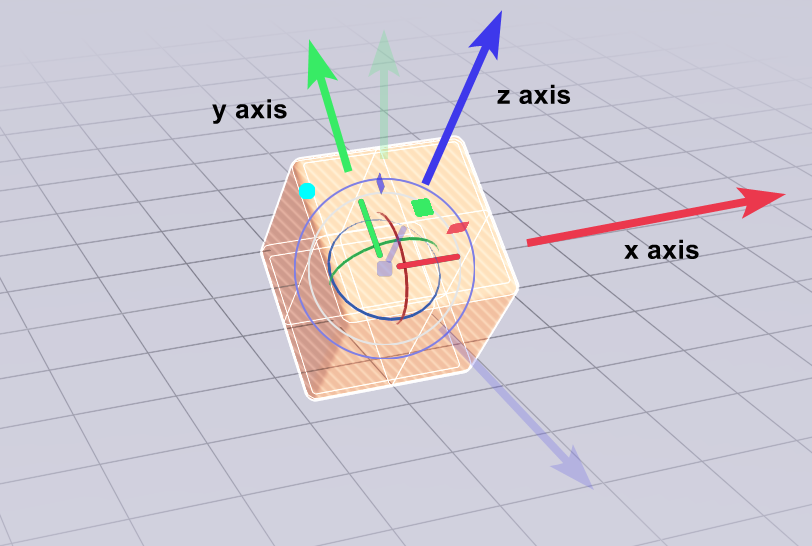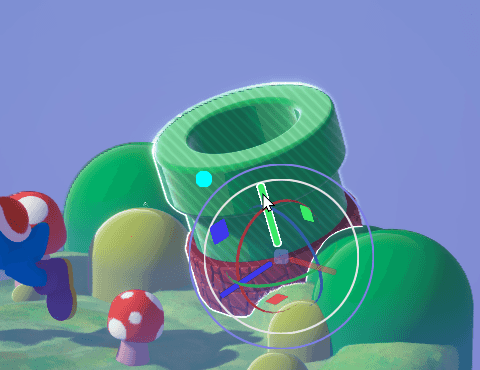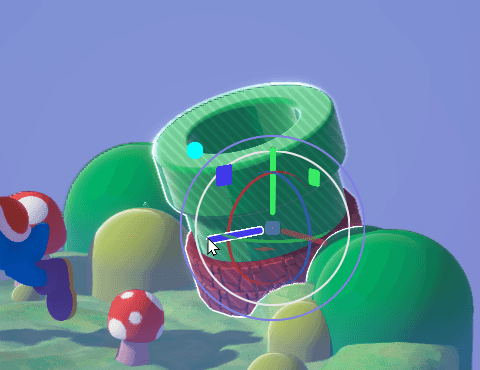Local vs. World Space
World Axis
Every unbound scene has fixed axes that extend in the X, Y, and Z directions. The location of every model is relative to the world origin: where these 3 axes intersect at (0,0,0).

As you move the camera to see your scene from different vantage points, these world axes remain fixed. This is analogous to how the North Pole stays fixed no matter where you are or what direction you're facing on Earth.
However, models and edits also have their own internal axes which are relative to its forward direction. These are known as local axes. These would be analogous to how you define forward as the direction you're looking, independent of whether you're facing the North or South Pole. "Forward" is always "ahead".
When you bring a model into a scene, its local coordinates are the same as the world coordinate (see image above). However as you begin to rotate an object, its local axes will diverge from world axes.
Here is the same cube as above after it has been rotate around the x axis.

As you can see, the Y and Z axis no longer match the world axis. The axes you're seeing in the above image are that cube's local axes. And the transform gizmo is set to operate on local coordinates.
Local Transform
Sometimes you want to move an object along its local axes. In the below example, the pipe is being moved along its local axis to make it taller, which is using local transform.

World Transform
To move the pipe along the ground, which does not align with any of its local axes, use the world transform.

By default transforms are set to local. Toggle between them using this toolbar item or the keyboard shortcut G

Final Thoughts
Placing objects precisely in 3D-space can be tricky. In the article on Snapping Tools we'll cover a number of ways to control precise placement, rotation, and scale of objects in unbound.